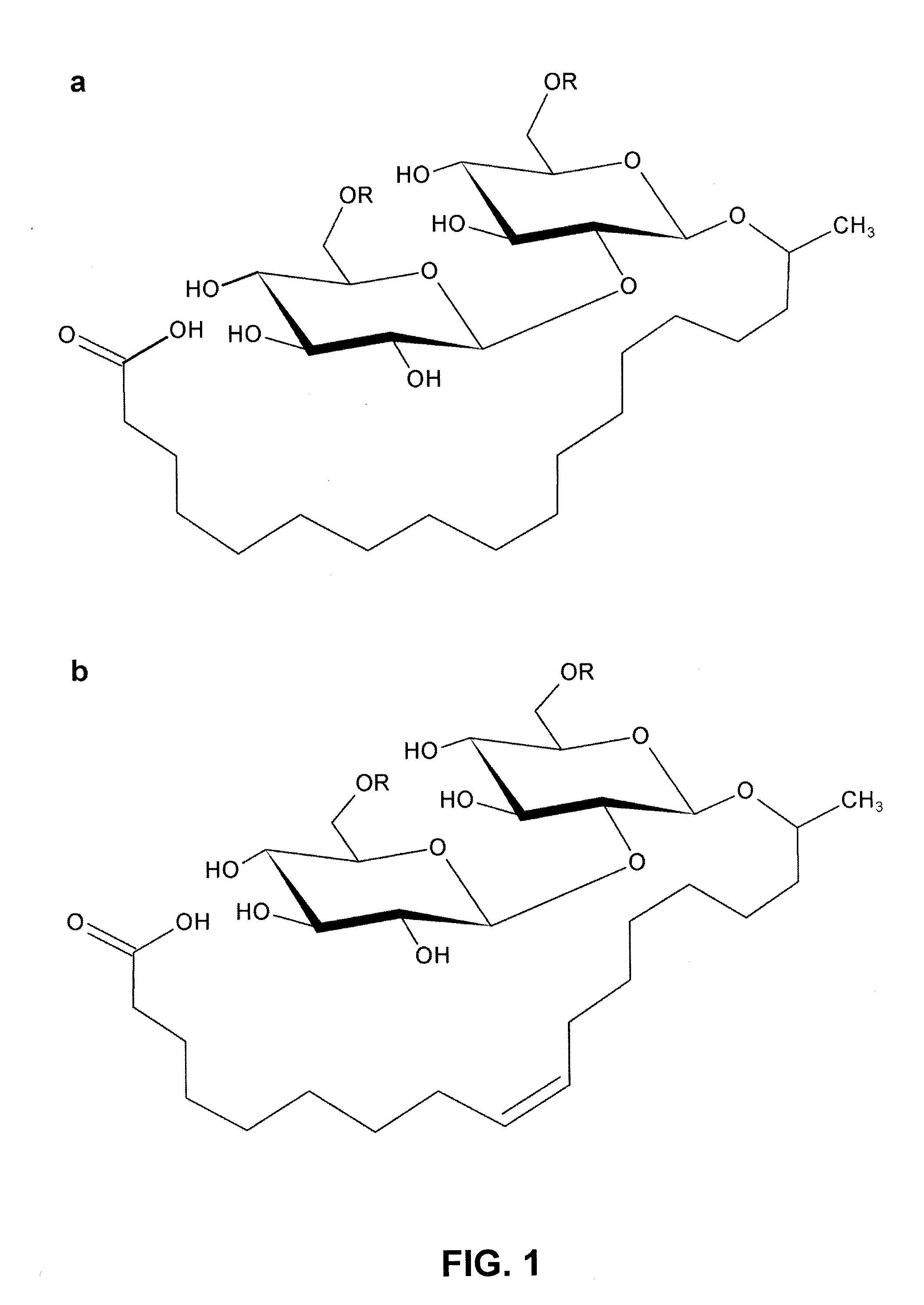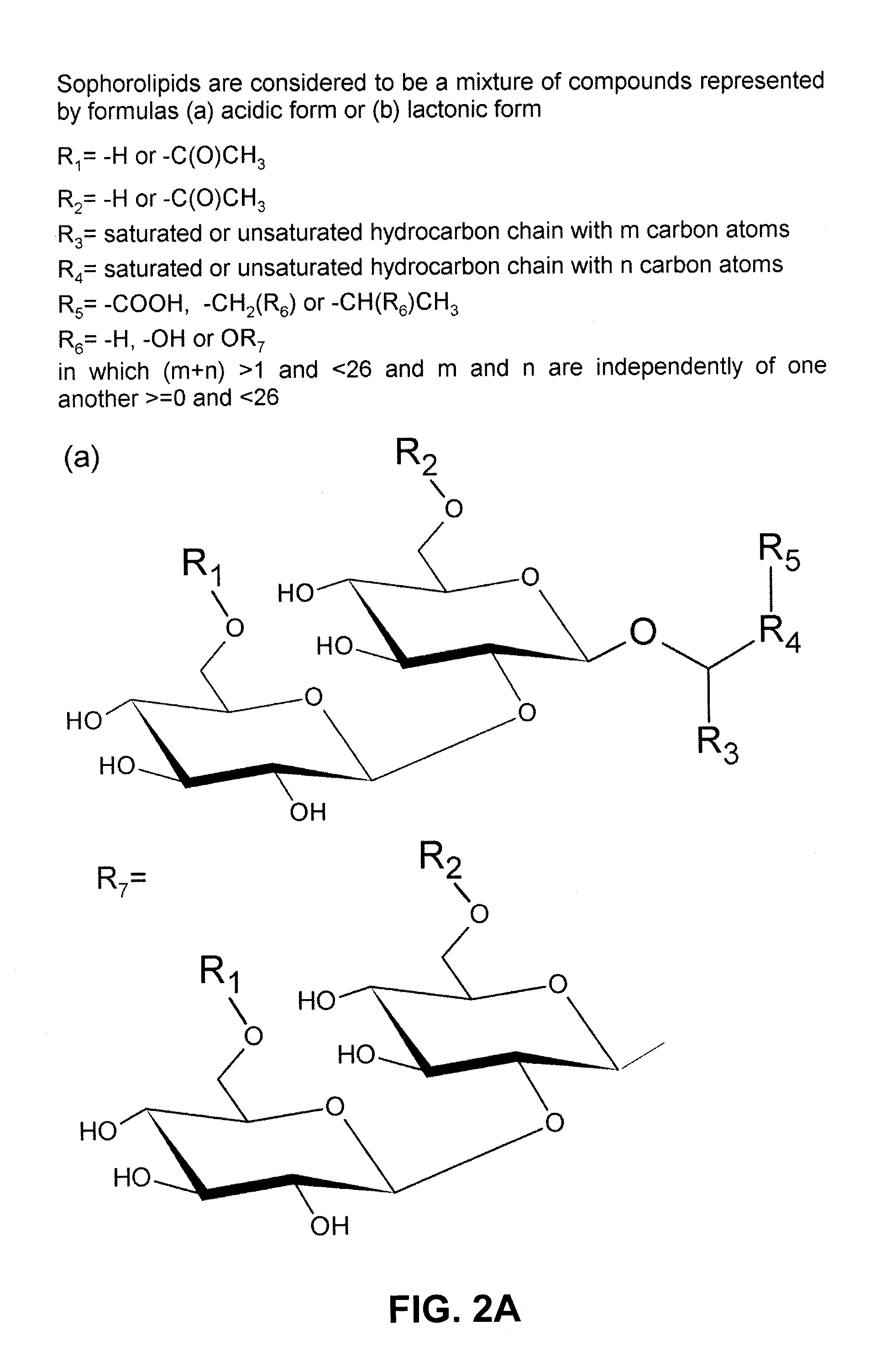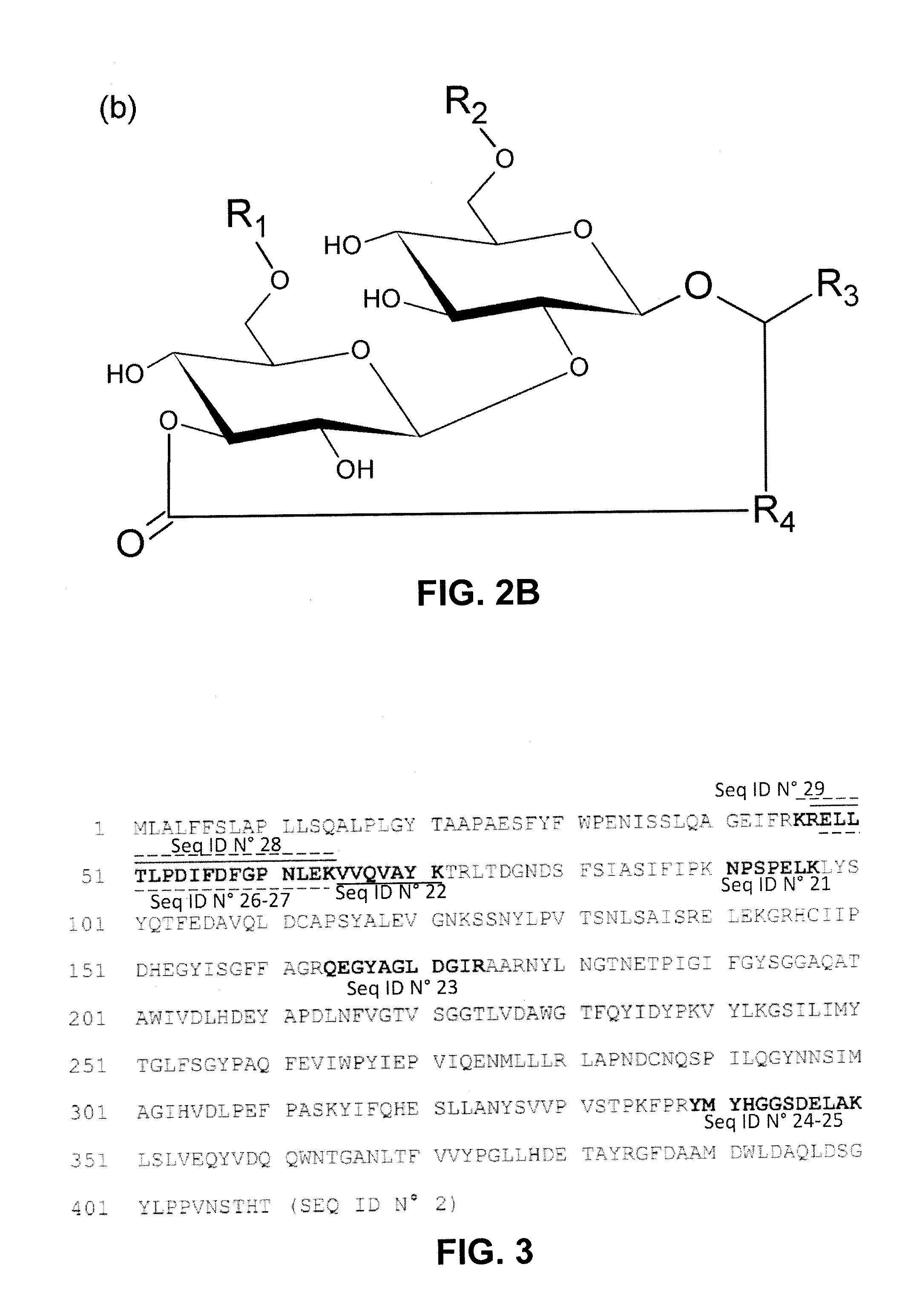Lactonase derived from candida bombicola and uses thereof
- Summary
- Abstract
- Description
- Claims
- Application Information
AI Technical Summary
Benefits of technology
Problems solved by technology
Method used
Image
Examples
example 1
Occurrence of a Putative Lipase Gene in the Secretome of Sophorolipid-Producing C. bombicola Cells
[0065]1.1 Material and Methods
[0066]1.1.1 Secretome Preparation
[0067]C. bombicola ATCC 22214 was cultured for eight days in 150 ml Lang medium (Lang et al., 2000). The cells were separated from the medium by centrifugation at 4,000 rpm for 15 minutes (4° C.). The medium liquid was subsequently filtered twice on a 0.22 μm filter to exclude any cellular trace. A protease inhibitor cocktail (complete, EDTA-free Protease Inhibitor Cocktail Tablets, Roche) was added to prevent protein degradation. Consequently, the protein fraction in the collected medium was enriched and concentrated to a volume of 30 ml using a Stirred Ultrafiltration Cell (Model 8200) with a 10 kDa molecular weight cut-off membrane (Sartorius-Stedim 14439-63-D). Next, proteins were further concentrated by ultrafiltration in VIVASPIN® 15R columns (MWCO 10 kDa, Vivaproducts) to a volume of 5 ml. The centrifugation was perfo...
example 2
Creation of a Lactonase-Negative C. bombicola Strain for the Production of Acidic Sophorolipids
[0081]2.1 Material and Methods
[0082]2.1.1 Strains and Culture Conditions
[0083]Candida bombicola ATCC 22214 was used as the parental or wild-type strain. Candida bombicola PT36, an ura3 autotrophic mutant, was derived from this parental strain and used to construct both the knock-out and overexpression strains. When sophorolipid production was intended, the medium described by Lang et al. (2000) was used. 37.5 g / L rapeseed oil was added two days after inoculation. Yeast cultures were incubated at 30° C. and 200 rpm for a total time of ten days.
[0084]Escherichia coli DH5α cells were used in all cloning experiments and were grown in Luria-Bertani (LB) medium 1% trypton, 0.5% yeast extract and 0.5% sodium chloride) supplemented with 100 mg / L ampicillin. Liquid E. coli cultures were incubated at 37° C. and 200 rpm.
[0085]2.1.2 DNA Isolation and Sequencing
example 3
Creation of a Lactonase Overexpressing C. bombicola Strain for the Production of Fully Lactonized Sophorolipids
[0108]Production of a sophorolipid mixture enriched in lactonic sophorolipid molecules is obtained by the usage of a sophorolipid-producing yeast strain as a host for overexpression of the C. bombicola lactonase gene. For C. bombicola ATCC 22214, for example, an overexpression cassette is created in which the lactonase gene is under control of the constitutive and highly active GKI (phosphoglycerate kinase) promoter. These overexpression constructs are cloned into a vector already comprising the C. bombicola URA3 selection marker with up- and downstream sequences for recombination in the genome (Van Bogaert et al., 2008a) and are subsequently used for transformation of a ura3-deficient C. bombicola strain. Expressing the lactonase in this way leads to a sophorolipid mixture remarkably enriched in the lactonic forms.
[0109]3.1 Material and Methods
[0110]3.1.1 Strains and Cultu...
PUM
| Property | Measurement | Unit |
|---|---|---|
| Fraction | aaaaa | aaaaa |
| Fraction | aaaaa | aaaaa |
| Fraction | aaaaa | aaaaa |
Abstract
Description
Claims
Application Information
 Login to View More
Login to View More - R&D
- Intellectual Property
- Life Sciences
- Materials
- Tech Scout
- Unparalleled Data Quality
- Higher Quality Content
- 60% Fewer Hallucinations
Browse by: Latest US Patents, China's latest patents, Technical Efficacy Thesaurus, Application Domain, Technology Topic, Popular Technical Reports.
© 2025 PatSnap. All rights reserved.Legal|Privacy policy|Modern Slavery Act Transparency Statement|Sitemap|About US| Contact US: help@patsnap.com



